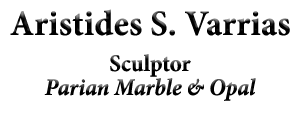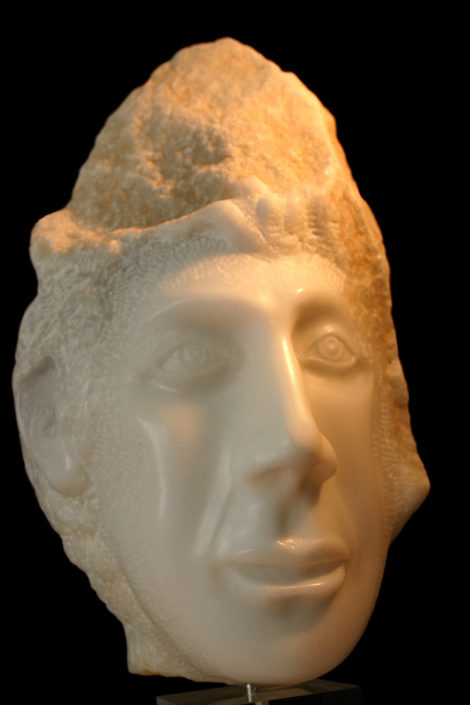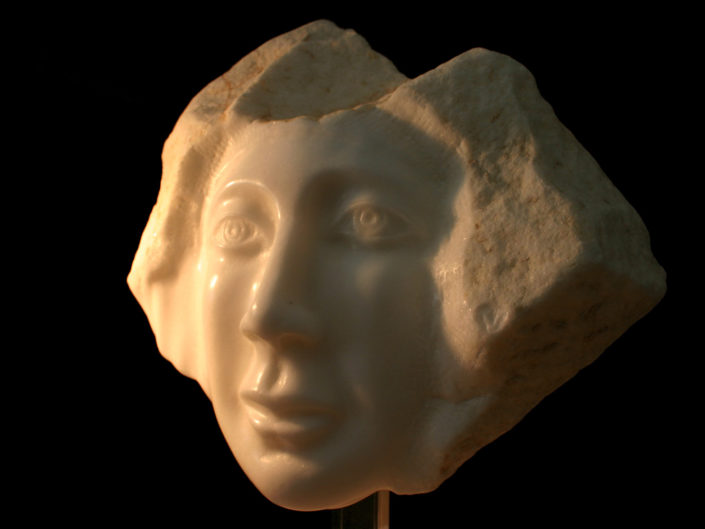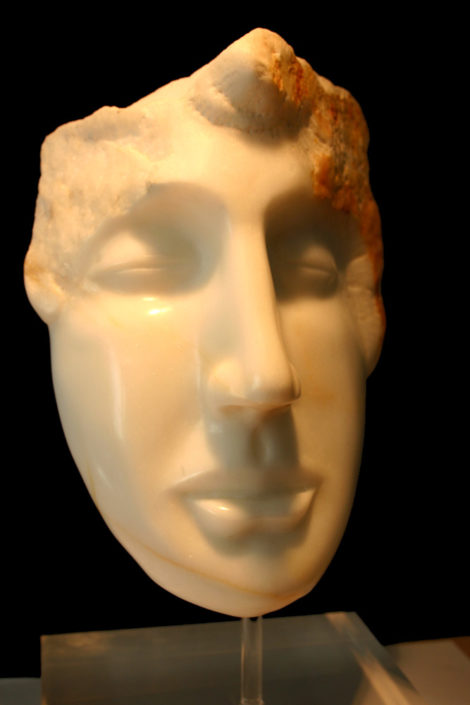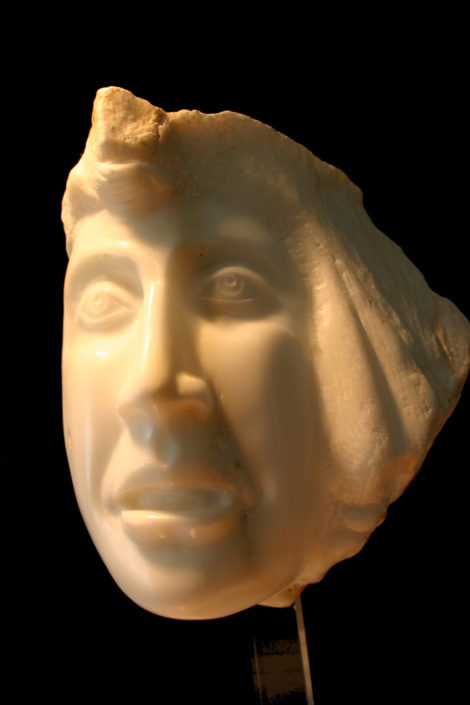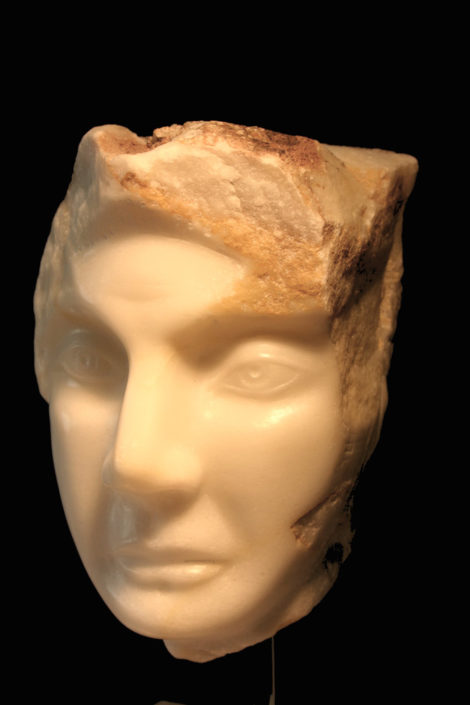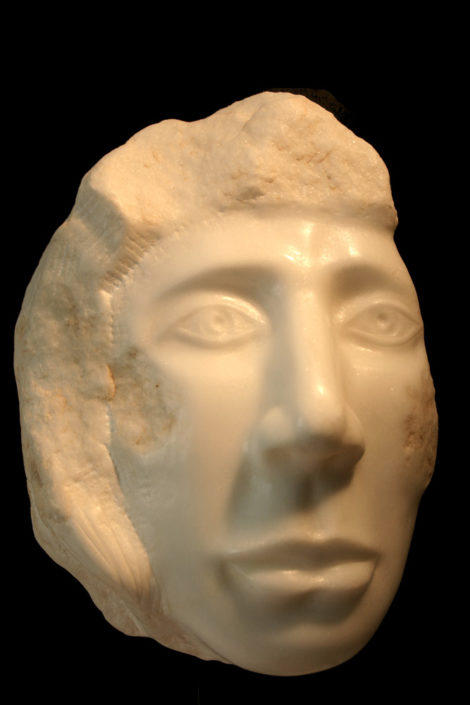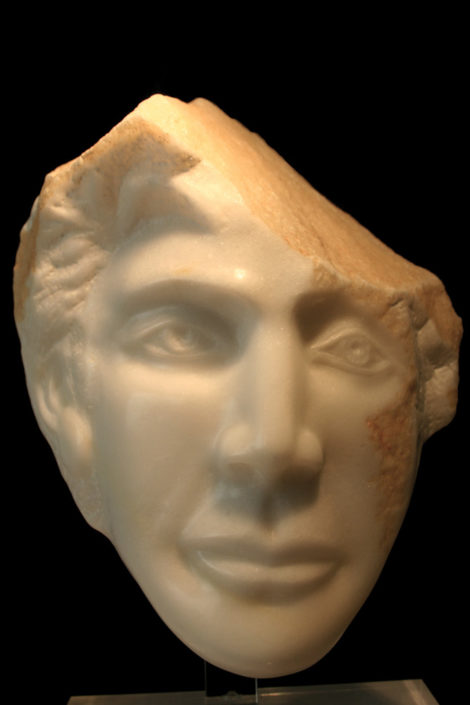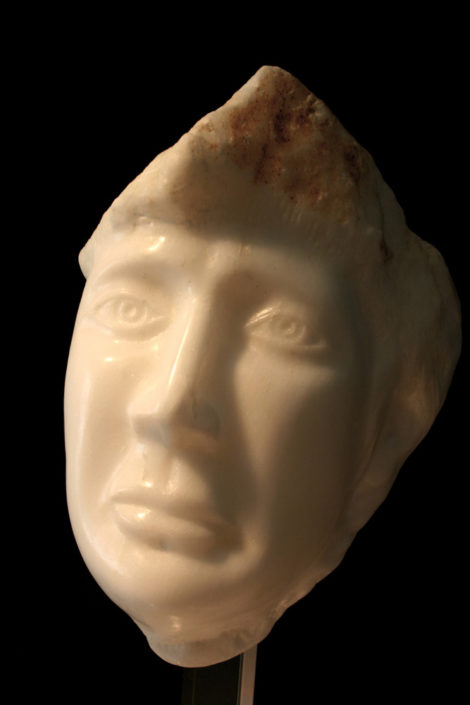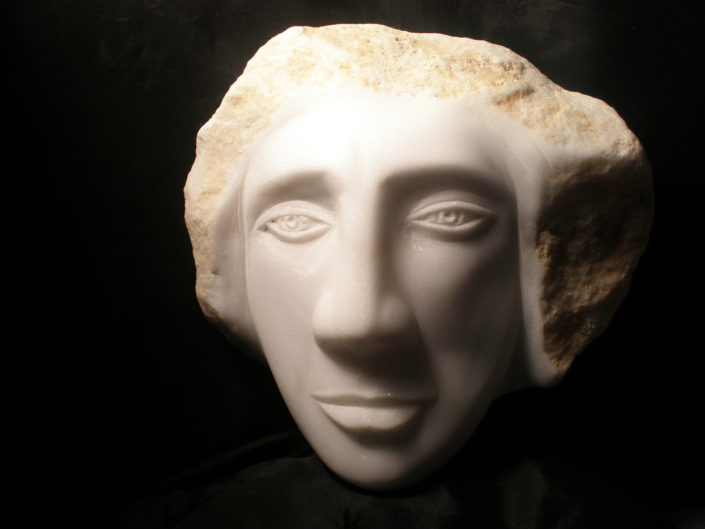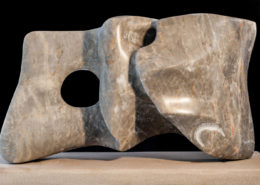Pegylides
Pegylides” is a collection of sculptures, fifteen “prosopa”, which are moving noiselessly in the paths of Kavafi’s poetry. For me it has been another voyage, an Alexandrine sail, a new stage of my dialogue with the latypes of the Parian marble.
“Pegylides” is a collection of sculptures, twelve ‘prosopa’, which are moving noiselessly in the paths of Kavafi’s poetry. For me it has been another voyage, an Alexandrine sail, a new stage of my dialogue with the latypes of the Parian marble.
Parian marble is the divine element, which came out of the heart of Parian Land and gave birth to the most significant sculptures of the Greek antiquity. Cycladic idols, kouri and kores, Hermes of Praxitelis, the ‘adolescent’ of Critias, Nike of Samothraki, and Aphrodite of Melos are some of the masterpieces, which are made by Parian Marble, the unique for its lucidity, softness and transparency ‘lychnitis’. Unfortunately, it has been more than seven centuries since this precious marble has been expired. Still, many small pieces, latypes (leftovers) are stored into the galleries of the ancient quarries, as well as spread onto the hills around.
For the last 25 years these pieces has been a challenge for me. The process of discovering them is by itself a voyage into history and aesthetics. When you approach them with the required respect and care they allow you to feel their strength, which is hidden inside them for centuries. In my sculpture these pieces do not stand for me as a mere element, which a sculptor uses to form a real or imaginary face. They rather stand in front of me as unique entities, as heterocities, able to cause such a dialogue with the artist, able to transform both into ‘prosopa’. This happens because a ‘prosopon’ is first and above all, a traveling being. It is an ‘ego’ who opens its sails, an ‘I’ who travels to meet a ‘thou’.
So my sculptures become a liberating process for the face that is hidden in each latype and this happens without altering the original shape and colour of each latype. Even the instruments I use in this process are those simple three tools, which the ancient Greek sculptors used: the needlepoint chisel, the folk point and the flat. Additionally, not only the original shape and color are visible, but also in these sculptures, the viewer can detect even the stages of the process, because the zones between the absolute untouched and the perfectly worked are left detectable in purpose.
The name of each sculpture does not reveal its very being, but rather refers to the see. So their names operate the same way as our names do. We ‘rise’ out ancestors by giving their names to our children. Broadly, by naming ourselves in a reference to a ‘saint’ we define our relationship with the whole tradition of our Greek and Christian culture. This kind of reference I am attempting by naming this way my collection Pegylides. Their names are after persons from the poetry of Kavafis, the poet of Alexandria.
Aristides Varrias
Chios, 2006
